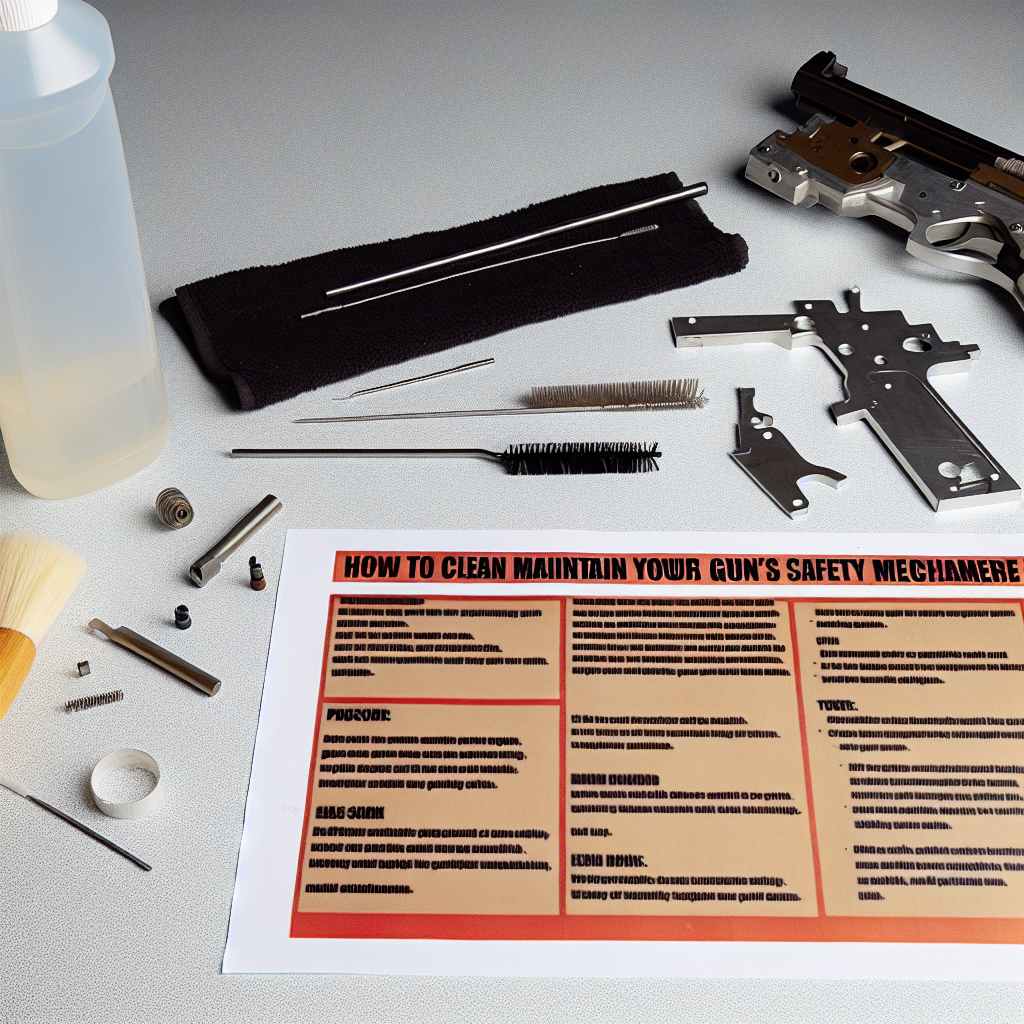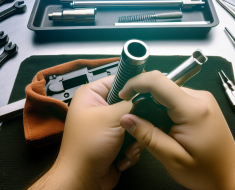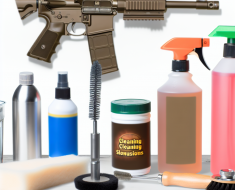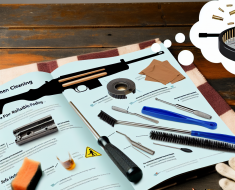How to Clean and Maintain Your Gun’s Safety Mechanism

Proper firearm maintenance is essential for ensuring reliability, longevity, and safety. Among the many components of a gun, the safety mechanism plays a critical role in preventing accidental discharges and protecting users. However, like any mechanical part, it requires regular cleaning and maintenance to function optimally. Neglecting this can lead to malfunctions that may compromise your safety.
In this comprehensive guide, we will explore how to clean and maintain your gun’s safety mechanism effectively. We’ll discuss why this task is crucial, walk you through the cleaning process, highlight common issues, and provide tips for long-term upkeep. Whether you’re a novice shooter or an experienced firearms enthusiast, understanding how to care for your safety mechanism is indispensable.
Understanding the Importance of Your Gun’s Safety Mechanism
The safety mechanism on a firearm is designed as a fail-safe feature to prevent accidental firing when the trigger is pulled unintentionally. It acts as a barrier between the trigger and the firing pin or hammer, depending on the firearm design.
Statistics from the National Safety Council highlight that accidental shootings account for thousands of injuries each year in the United States alone. While human error is often a factor, mechanical failures—such as a faulty or dirty safety—can exacerbate these risks.
Regular maintenance ensures that:
- The safety engages smoothly without sticking or slipping.
- The firearm does not fire unless the safety is disengaged.
- You maintain confidence in handling your weapon safely at all times.
Ignoring maintenance can lead to wear and debris buildup that compromises these functions. A well-maintained safety mechanism reduces risks significantly.
Common Types of Safety Mechanisms and Their Maintenance Needs
Before diving into cleaning techniques, it’s important to recognize that different firearms use various types of safeties. Each has unique features requiring specific care:
- Manual Thumb Safety: Common on many semi-automatic pistols (e.g., 1911 models), it requires manual engagement/disengagement by thumb movement.
- Grip Safety: Found on some pistols like the Springfield XD series; it only allows firing when firmly gripped.
- Trigger Safety: Integrated into the trigger itself (e.g., Glock pistols), it prevents firing unless the trigger is deliberately pulled.
- Decocker/Combined Safety: Present on some firearms such as SIG Sauer models; combines decocking with manual safeties.
The cleaning method varies slightly based on these designs. For instance, grip safeties require inspection of their spring tension and cleanliness under the grip frame, whereas manual thumb safeties involve checking pivot points and detents for wear or dirt accumulation.
The Step-by-Step Process for Cleaning Your Gun’s Safety Mechanism
Cleaning your gun’s safety mechanism involves patience and attention to detail. Here’s an effective step-by-step approach:
1. Ensure Complete Safety Before Starting
The first rule of any firearm maintenance: make sure your gun is completely unloaded. Remove magazines, open the action, visually inspect chambers for live rounds, and keep ammunition away from your workspace.
2. Disassemble According to Manufacturer Guidelines
Refer to your firearm’s manual for instructions on how to field-strip or partially disassemble it so you can access the safety mechanism without damaging other parts.
3. Inspect the Safety Mechanism
Look for any visible signs of dirt, debris buildup, corrosion, or mechanical wear such as loose springs or bent levers. A magnifying glass may help identify fine particles lodged in crevices.
4. Clean Using Appropriate Tools
- Bristle Brushes: Use nylon or brass brushes designed specifically for firearms to scrub away grime gently without scratching surfaces.
- Cotton Swabs/Patches: Perfect for reaching tight spots inside detent holes or pivot points where brushes cannot reach easily.
- SOLVENTS: Apply quality gun cleaning solvents formulated to dissolve carbon residues but safe on metal finishes (avoid harsh chemicals).
Dab solvent onto brushes or swabs then carefully clean all moving parts related to the safety—pivot pins, detent springs, catch levers—and wipe off loosened debris immediately with clean patches.
5. Lubricate Moving Parts Sparingly
A light application of high-grade gun oil or lubricant improves smooth operation but avoid excess which can attract dust or cause gumming up over time. Focus on contact points such as pivot areas but avoid oily residue buildup around springs or inside detent holes which could impair function.
6. Reassemble and Function-Test
Put all components back together per instructions and test engage/disengage motions several times manually—confirming smooth operation without sticking or excessive looseness. If possible (and safe), perform dry-fire tests ensuring no firing occurs with safety engaged.
Troubleshooting Common Problems with Gun Safeties
No matter how well you maintain your firearm’s safety mechanism, problems may occasionally arise. Being able to diagnose common issues early can prevent accidents or costly repairs later:
-
<








